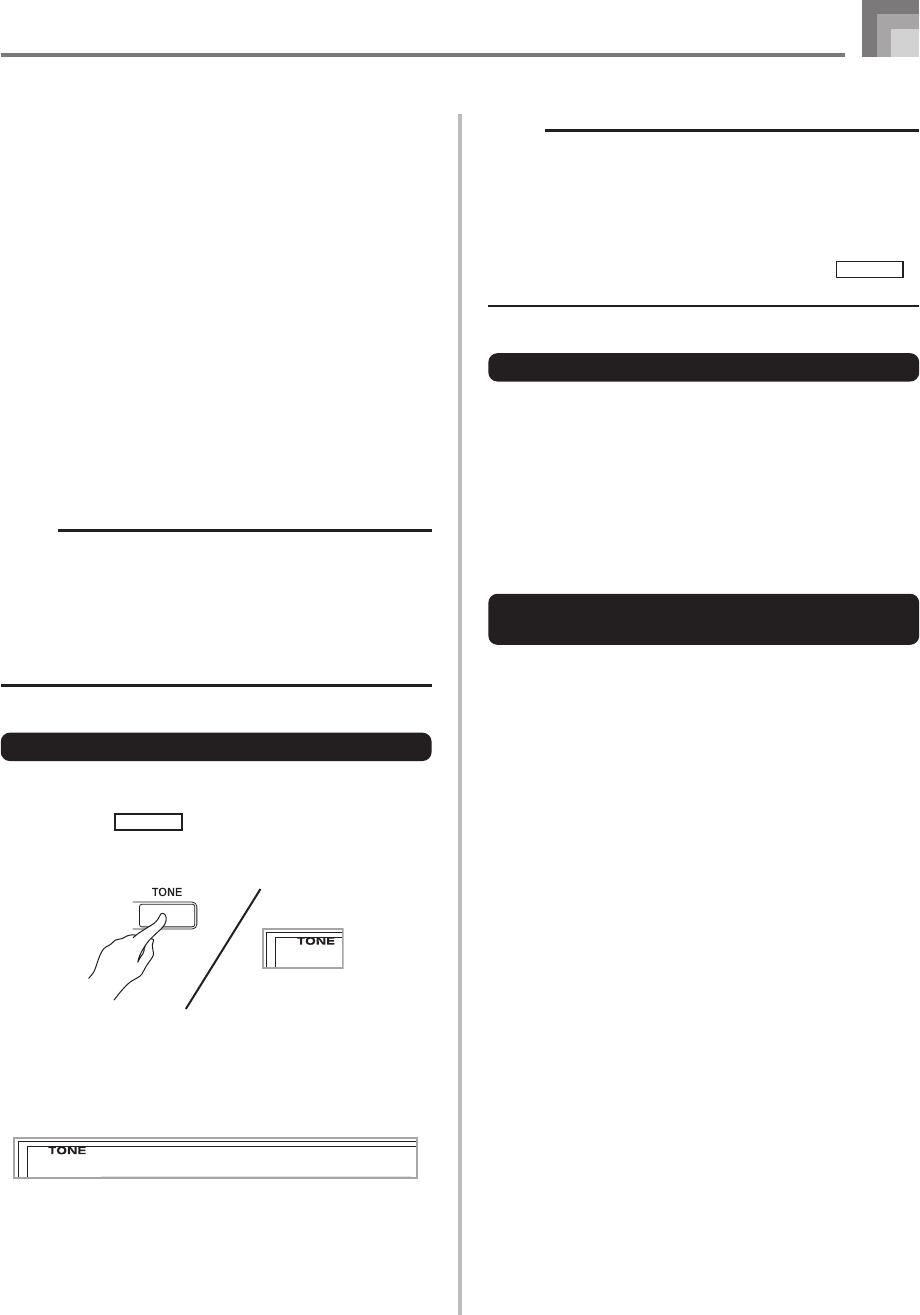
E-19
Basic Operations
NOTE
• Always input all three digits for the tone number,
including leading zeros (if any).
• You can also increment the displayed tone number by
pressing [+] and decrement it by pressing [–].
• When one of the drum sets is selected (tone numbers
600 through 619), each keyboard key is assigned a
different percussion sound. See the separate
Appendix
B for details.
Polyphony
The term polyphony refers to the maximum number of notes
you can play at the same time. The digital piano has 32-note
polyphony, which includes the notes you play as well as the
rhythms and auto-accompaniment patterns that are played
by the keyboard. This means that when a rhythm or auto-
accompaniment pattern is being played by the digital piano,
the number of notes (polyphony) available for keyboard play
is reduced. Also note that some of the tones offer only 10-
note polyphony.
Changing Tones and Configuring
DSP Effect Settings
This digital piano has only a single DSP sound source. Because
of this, selecting tones for which DSP is enabled for multiple
parts when layering or splitting tones (pages E-63, 64) can
cause conflicts. To avoid conflicts, DSP is allocated to the last
DSP enabled tone, and DSP is disabled (DSP line OFF) for all
other parts.
DSP line is a parameter that controls whether or not the
currently selected DSP effect is applied to a part.* Each tone
has a DSP line parameter. Selecting a tone for a part applies
the tone’s DSP line parameter setting to all parts.
* The DSP line parameter is turned on (DSP effect is applied)
for the 400 Advanced Tones numbered 000 through 399,
and turned off (DSP effect not applied) for the 200 preset
tones from 400 to 599. For information about other tones,
see “Tone Types” on page E-18.
*1: See “Changing Tones and Configuring DSP Effect
Settings” on page E-19.
*2: Memory area for tones created by you. See “Synthesizer
Mode” on page E-43. User tone areas 700 through 799
initially contain the same data as advanced tones 000
through 099.
*3: Depends on source tone or user setting. See “Synthesizer
Mode” on page E-43 for more information.
*4: Area for data transferred from a computer. See “Internet
Data Expansion System” on page E-79 for more
information. For information about waveforms, see
“Creating a User Tone” on page E-46.
*5: Depends on tone. This status can be checked by viewing
the DSP button. See “About the DSP Button” on page E-
27 for more information.
*6: Memory area for tones created by you. See “To edit a
drawbar organ tone” on page E-22. User drawbar organ
tone areas initially contain two sets of the same data as
drawbar organ tones types 000 through 049.
NOTE
• You cannot select tone numbers not included in the
above range (standard tones 620 through 699 and 820
through 899, and drawbar organ tones from 050 to 099).
When you use the [+] and [–] buttons to scroll through
tone numbers, scrolling jumps across the unused
numbers. Pressing [+] when 619 is selected, for
example, jumps to 700.
To select a tone
1
Find the tone you want to use in the tone list (the
separate
Appendix
A) and note its tone number.
2
Press the TONE button.
3
Use the number buttons to input the three digit tone
number for the tone you want to select.
Example: To select “432 GM ACOUSTIC BASS”, input
4, 3 and then 2.
Aco432 usBsG


















